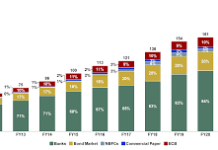Hospitals and healthcare providers are starting to think differently about how they buy medical devices and equipment. It’s no longer just about price or performance, many are now looking at how products impact the environment, how responsibly they are made, and whether suppliers follow ethical practices. This approach, known as ESG (Environmental, Social, and Governance), is becoming an important part of procurement decisions.
By considering ESG, hospitals can reduce waste, support fair practices, and make smarter long-term choices. At the same time, it encourages medical technology companies to innovate and offer more sustainable, responsible solutions. In short, ESG is helping hospitals make purchases that are better for patients, communities, and the planet.
1. Why ESG Matters to Hospitals
Healthcare organizations have a unique responsibility to support public health, and that extends beyond patient care. Hospitals consume significant amounts of energy, generate waste, and purchase large volumes of medical devices and supplies. Integrating ESG into procurement allows hospitals to address these environmental and social challenges while maintaining high-quality patient care.
Key reasons hospitals are adopting ESG include:
- Environmental Responsibility – Hospitals aim to reduce carbon emissions, minimize waste, and use resources more efficiently. ESG-driven procurement ensures that medical devices are designed and manufactured with sustainability in mind.
- Social Responsibility – Hospitals consider supplier labor practices, community engagement, and equitable access to healthcare technologies. This approach encourages ethical and fair practices throughout the supply chain.
- Governance and Compliance – Transparent governance and risk management help hospitals avoid supplier risks, ensure regulatory compliance, and maintain public trust.
Incorporating ESG criteria also supports hospitals’ long-term strategic goals. Reducing waste, conserving energy, and selecting environmentally friendly products not only aligns with global sustainability targets but can also reduce operational costs over time.
2. How ESG Is Shaping MedTech Procurement
The rise of ESG considerations is changing how hospitals evaluate suppliers and select medical technologies. Some of the key ways ESG is influencing procurement include:
1. Supplier Evaluation
Hospitals now evaluate suppliers not just on cost and performance but also on their ESG credentials. Suppliers are assessed for:
- Environmental impact of manufacturing processes
- Use of sustainable materials in devices
- Recycling and end-of-life management practices
- Ethical labor and social responsibility initiatives
This approach encourages suppliers to adopt more sustainable practices and prioritize social responsibility, creating a positive cycle throughout the MedTech industry.
2. Lifecycle Considerations
Hospitals are increasingly looking at the entire lifecycle of medical devices, from raw material sourcing to disposal. Devices that can be reused, recycled, or made from biodegradable materials are preferred over single-use, non-recyclable alternatives. By considering the environmental footprint at every stage, hospitals can reduce waste and lower their overall environmental impact.
3. Circular Economy Practices
Some hospitals are adopting circular economy principles in their procurement strategy. This includes selecting devices designed for refurbishment or remanufacturing, which helps reduce waste, conserve resources, and lower costs. Circular economy practices also promote innovation in MedTech design, encouraging companies to create devices that are modular, repairable, and recyclable.
4. Integration with Purchasing Processes
ESG is increasingly being embedded into formal procurement policies. Hospitals include ESG-related questions in tenders and RFPs (requests for proposals) and require suppliers to provide information about sustainability practices, compliance standards, and social responsibility initiatives. This ensures that ESG is not an optional consideration but a core part of the decision-making process.
3. Innovation in ESG-Driven MedTech
The shift toward ESG is spurring innovation in the medical technology sector. Manufacturers are rethinking how devices are designed, produced, and delivered to align with ESG standards.
Some notable trends include:
- Eco-Friendly Materials – Companies are using biodegradable polymers and recyclable plastics in devices and packaging. This reduces environmental impact and helps hospitals meet sustainability goals.
- Modular and Reusable Design – Devices are being built to allow components to be replaced or upgraded, reducing waste and extending product life.
- Sustainable Manufacturing – Manufacturers are adopting energy-efficient production methods, closed-loop systems to recycle materials, and digital tools to optimize resource use.
- Transparency and Traceability – Advanced digital platforms allow hospitals to track ESG metrics, such as carbon emissions, waste reduction, and social compliance, throughout the supply chain.
By embracing these innovations, MedTech companies not only meet hospital requirements but also gain a competitive advantage in an increasingly ESG-conscious market.
4. The Business Case for ESG
Incorporating ESG into procurement decisions offers tangible benefits for both hospitals and MedTech companies:
- Operational Efficiency – Sustainable devices and practices can reduce energy consumption, minimize waste, and lower disposal costs.
- Reputation and Trust – Hospitals that prioritize ESG strengthen their reputation with patients, staff, regulators, and the broader community.
- Supplier Competitiveness – MedTech companies that demonstrate strong ESG performance are more likely to win contracts and establish long-term partnerships.
- Investor Confidence – ESG-focused organizations attract investors who prioritize sustainability and responsible governance.
- Innovation Incentives – ESG drives innovation, encouraging the development of new materials, manufacturing processes, and product designs that are both sustainable and high-performing.
Ultimately, ESG in procurement is more than a moral choice, it’s a strategic one that aligns environmental stewardship with business objectives.
5. Challenges in ESG Implementation
While ESG presents numerous opportunities, hospitals and MedTech companies face several challenges:
- Data Collection – Gathering accurate ESG data from suppliers can be complex, especially for global supply chains.
- Cost Considerations – Eco-friendly materials and sustainable manufacturing processes can have higher upfront costs.
- Regulatory Variations – ESG-related regulations differ across regions, making compliance more challenging for multinational suppliers.
- Supplier Readiness – Not all suppliers are prepared to meet ESG requirements, and switching vendors can be disruptive.
Despite these challenges, the long-term benefits of ESG integration make it a worthwhile investment for healthcare providers and suppliers alike.
6. The Future of ESG in MedTech Procurement
The integration of ESG into hospital procurement is expected to continue growing and evolving. Key trends for the future include:
- Standardization – Hospitals may adopt standardized ESG scoring frameworks to evaluate suppliers consistently.
- Increased Transparency – Public reporting of ESG metrics will become more common, improving accountability and trust.
- Wider Adoption of Circular Practices – More devices will be designed for reuse, refurbishment, or recycling, creating a true circular economy in MedTech.
- Global Influence – ESG-focused procurement is likely to expand globally, affecting suppliers in all regions and encouraging more sustainable practices worldwide.
By prioritizing ESG, hospitals are not only contributing to a healthier environment but also fostering a more responsible and innovative MedTech industry.
Conclusion
ESG is no longer an optional consideration in healthcare procurement, it has become a critical factor shaping the future of MedTech. Hospitals and healthcare providers are increasingly evaluating suppliers based on environmental impact, social responsibility, and governance standards.
This trend is driving innovation in device design, manufacturing, and supply chain practices. For MedTech companies, meeting ESG expectations opens doors to new partnerships, competitive advantages, and long-term growth. For hospitals, ESG integration supports operational efficiency, sustainability, and improved reputation.
As ESG becomes a central focus, it is reshaping how healthcare providers buy technology, how MedTech companies innovate, and ultimately how healthcare impacts the planet. The move toward responsible, sustainable procurement marks a new era where healthcare and environmental stewardship go hand in hand.
I hope you find the above content helpful. For more such informative content, please visit Medtechreporter.











